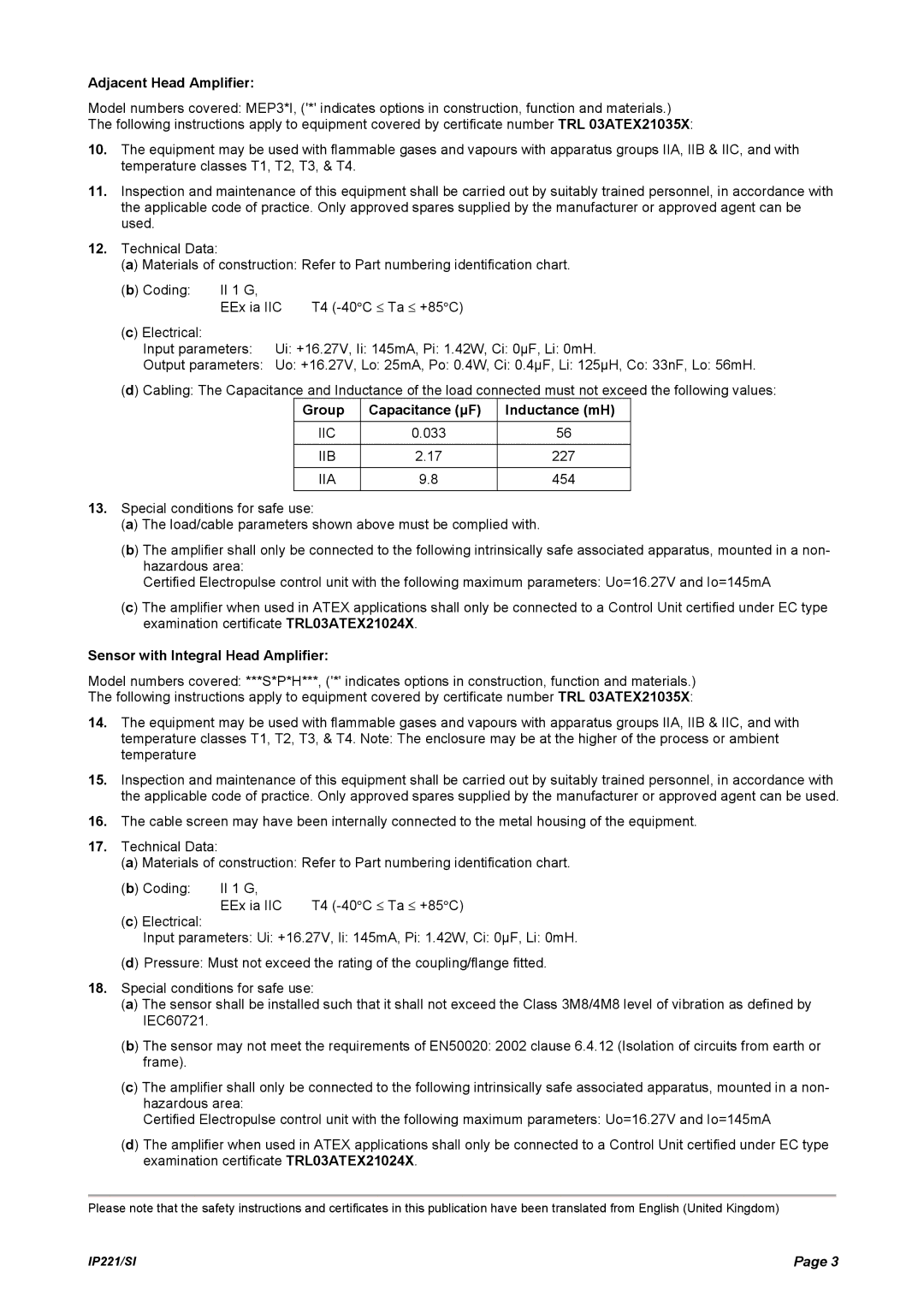IP221/SI specifications
The Emerson IP221/SI is an intelligent process control solution designed to meet the rigorous demands of various industrial applications. Known for its unique blend of flexibility, robustness, and advanced technology, this product serves as a powerful tool for process automation and monitoring.At the core of the IP221/SI’s appeal is its versatility. It comes equipped with multiple I/O options that allow for seamless integration into existing systems, facilitating both analog and digital input and output configurations. This feature is particularly beneficial for industries that require adaptable solutions to match their specific operational needs.
One of the standout characteristics of the IP221/SI is its use of sophisticated communication protocols. It supports multiple fieldbus options, including MODBUS and Ethernet/IP, ensuring reliable data exchange between devices across different networks. This connectivity supports real-time monitoring and control, allowing for swift decision-making and enhanced operational efficiency.
The IP221/SI is designed with advanced processing capabilities that enable complex calculations and data handling. This includes features for trending, alarming, and reporting, which can be customized to fit the end-user’s requirements. The intelligent algorithms embedded in the device help optimize performance and reduce the likelihood of failures by predicting maintenance needs.
Another key feature is its user-friendly interface. The device provides intuitive configuration options and diagnostics that simplify setup and operational monitoring. Moreover, the IP221/SI is equipped with a graphical display that facilitates easy navigation through various operational parameters and settings.
Durability and reliability are paramount in industrial environments, and the Emerson IP221/SI excels in this regard. Built to withstand harsh conditions, it is resistant to vibrations, temperature fluctuations, and exposure to corrosive elements. This makes it an ideal choice for applications in sectors such as oil and gas, water and wastewater, food and beverage, and chemical processing.
In summary, the Emerson IP221/SI is a robust and intelligent process control solution featuring versatile I/O options, advanced communication protocols, and powerful processing capabilities. Its user-friendly design, coupled with exceptional durability, positions it as a reliable choice for organizations seeking to enhance their automation processes and improve overall operational efficiency.
